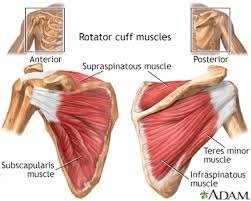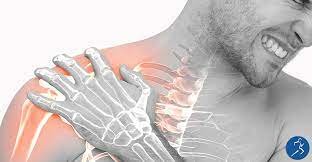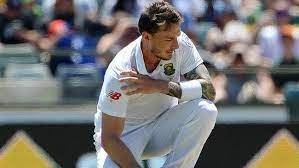Know your Injuries – Part 6: Rotator Cuff Strain, Partial or Complete Tear
Dr Meenakshi presents the early management of rotator cuff injuries in Part 6 of her Sports Injury Management Series.
Here is another muscle group prone to common injury in physical activity, exercise and sports: rotator cuff muscles.
These are injuries to the muscles or tendons that attach to bones in shoulder. Contractile units comprising muscles, tendons and bones stabilize the shoulder joint while allowing a large range of motion. The strain will normally occur at the weakest joint.
The rotator cuff is a functional anatomical unit located in the upper extremity, in the shoulder area. It functions in relation to the glenohumeral joint, where the muscles of the cuff work both as the executors of the movements of the joint and the stabilizers of the joint.
Injuries of the rotator cuff interfere with the efficient function of the glenohumeral joint leading to the inability to perform the movements associated with this joint.
The rotator cuff includes the following muscles –
- Subscapularis
- Infraspinatus
- Teres minor
- Supraspinatus

Why are they called rotator cuff muscles?
As the name suggests, the rotator cuff plays a major role in the internal and external rotation of the arm in the shoulder joint. All the muscles mentioned above fulfill different functions. The subscapularis muscle is a powerful internal rotator which also supports the arm during abduction and adduction.
The injury – the strain, really – as expected, may take place at the weakest part of the shoulder unit. These strains are of three types:
- Grade I or minor: slightly pulled muscle without tearing muscle or tendon fibers. Loss of strength is not evident.
- Grade II or moderate: tearing of fibers in muscle or bone or at site og bone attachment.
- Grade III or severe: rupture of the bone – muscle – tendon attachment with separation of fibers.
Dr Meenakshi breaks down her explanation in terms of –
- symptoms
- causes
- prevention
- first aid
- basic rehab movements
Symptoms
Soft tissues surrounding the strain including nerves, periosteum, blood vessels and lymph vessels.
- pain when moving or stretching the shoulder
- Muscle spasm in shoulder
- Swelling injury area
- Loss of strength in moderate to severe strains
- Crepitation (crackling noise and sensation)
- Calcification of shoulder muscles or tendon (see through Xrays)
- Inflammation of tendon sheath

Causes
- Prolonged overuse of muscle-tendon units in shoulder
- Acute, sudden impactful injury to the shoulder area
Risk increases with:
- Contact sport
- Throwing sports
- Cardiovascular problem that reduces blood circulation
- Medical history of bleeding
- Obesity
- Poor muscle condition
- Poor nutrition
- History of previous injury
Shoulder pain is common in cricket due to the repeated action of throwing the ball. In most cases shoulder pain is caused by rotator cuff tendonitis, which occurs when the tendons surrounding the rotator cuff become swollen. This injury is usually due to overuse.
Severe strain may require surgery. Chronic strain is caused of repetitive overuse. Acute strains are caused by overstress or direct injury.
Body parts involved:
Muscles and tendons that attach to bones in the shoulder including the rotator cuff muscles and tendons. Bones in the shoulder area including humerus, clavicle and scapula.

Prevention
Prevention is better than cure! The precautions to be taken are common to all sports and exercise injuries. But it is worth reminding the reader!
- It is essential to engage in a physical conditioning that involves appropriate strength and flexibility building movements prior to playing sports.
- Stretch the thigh and lower leg muscles as also the tendons prior to physical activity.
- Improve functional movement and dynamic stability of the knee joints.
- Improve technique of sports movement or exercise like “calf raises” with external resistance in the weight training studio.
- Try to be in shape to play your sport; don’t play your sport to get in shape!
First Aid
Follow the P.R.I.C.E. drill –
- Protect the injured part, not allowing any further damage.
- Rest the injured part.
- Apply ice or cold treatment for 15-20 minutes.
- Compression: use of mild to moderate pressure to the injured area with bandages / crepe bandages is advisable.
Current international standards have replaced P.R.I.C.E. with P.O.L.I.C.E.
- P – Protection of injured part
- O/L – Application of Optimal load (local injury factors) / Training load
- C.E. – as mentioned earlier (ice + compression+ elevation)
Follow up on First Aid
- The doctors will perhaps recommend an elastic bandage or a splint or even a cast from the ankle to the groin in order to immobilize the injured knee.
- Continued use of ice packs three or four times a day, 15 to 20 minutes per session is advisable.
- After 72 hours, the doctors may recommend application of heat therapy, liniments or ointments.
- Massage therapies as also hydro-therapies will be certainly enable quicker recovery.
Nutrition plays a big role in the recovery process and the injured person must consult a certified sports nutritionist.
Exercises to prevent injuries and strengthen the hamstrings
Dr Meenakshi (P. T.) recommends these rehab exercises to help recover from rotator cuff related injuries.
Rehabilitation must begin with bandages to support the shoulder unit. Icing after exercise is recommended.
- Pendulums with weight
- Isometric internal rotation and external rotation
- Internal rotation and external rotation with weight or with the rubber resistance bands or tubes
- Is, Ts, Ys and Ws – e.g. for ‘Is’ lie on stomach put your arms straight in front of you and thumbs up and just lift your arms just little bit off the ground
- Rowing with help of resisted band
- Bear hugs (kind of opposite to rows – or “flyes” ) with help of rubber resistance bands.
See your doctor if your symptoms persist over 10 days or pain worsens despite treatment.
Expect more in this informative and useful series of videos by Dr Meenakshi! You can also read a more detailed blog in this connection on www.gayofitnessacademy.com
